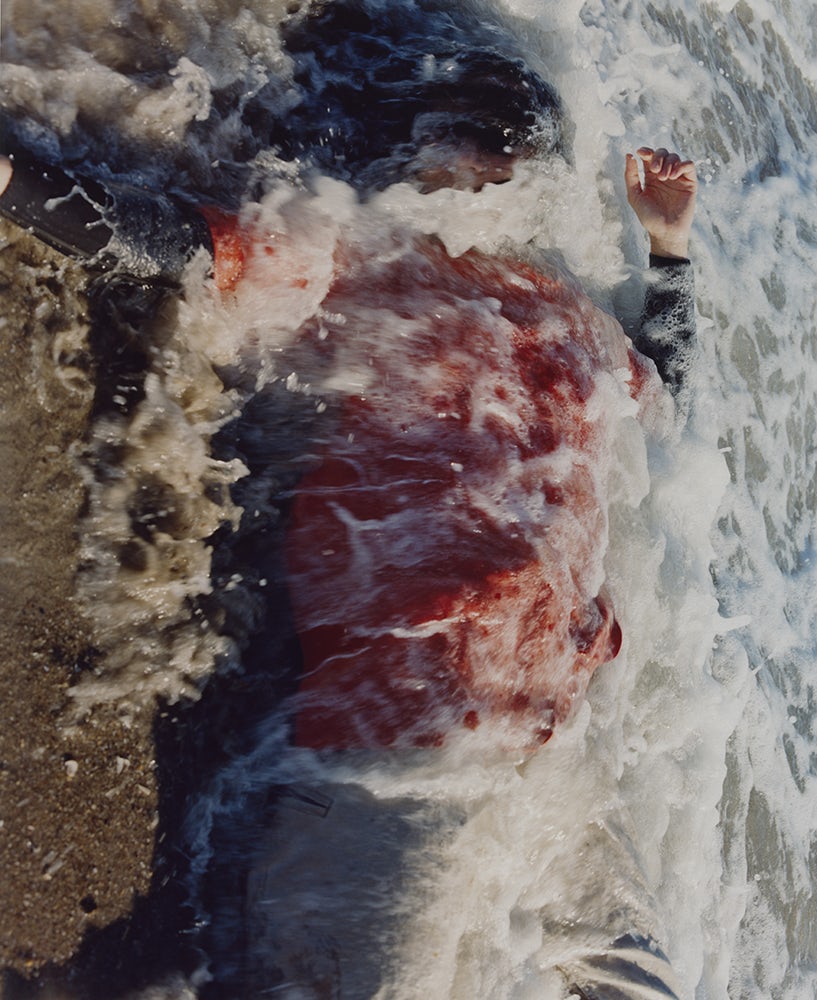Exposure: András Ladocsi
In András Ladocsi’s photographs, water acts as a connecting force to his past as well as an enduring theme in his present work, where he explores ideas of friendship, community, and freedom
Water is a persistent presence in András Ladocsi’s photographs. It covers, drenches, and envelopes his sitters like a wild, unwieldy connective tissue that binds people and places.
This relationship with water began early for the Hungarian photographer and cinematographer, whose early life was consumed by competitive swimming for 14 years. His schedule was demanding: up at 4am to train before school and then straight to the pool afterwards for another three-hour session.
He trained 15 times a week at his peak, travelling nationally and internationally, spending more time in the water than on dry land. While he loved to compete, Ladocsi was always concerned about his relationship with his loved ones being compromised.
“I thrived on that feeling of adrenaline before a competition,” he tells me from his home in Paris. “It’s always a great feeling when I step into the pool. I love the environment of swimming: the smell, the atmosphere, the drama, and the memories. But I’m also a very nervous person. Growing up on a different schedule to everyone around me made connecting with my friends a little challenging. I was always thinking about how I could keep up with them. Are we close enough? Am I participating enough? Everything felt uncertain, and it was heavy to carry at the time.”

By university, Ladocsi stopped swimming. He switched to the high dive for a year before eventually closing his competitive chapter to focus on his studies, putting water to the back of his mind. Photography became his new focus, first making work about his sister Luca and later his closest friends.
His images – which lean heavily on portraiture – shift between moments of rest and repose to immense action and energy. Together, the work speaks to the relationship between people and their environment and how we remain connected to the people we love, even in complete isolation, a facet of life pertinent to Ladocsi’s sense of self. If years of swimming created a fraught separation for the artist, photography has brought everyone in his life closer together.
In 2015, he began a new body of work, titled There is a Big River, in Which There is a Big Island, in Which There is a Lake, in Which There is an Island, in Which There is a Small House, Where a Life is Growing in a Womb. The poetic title describes a literal destination in which his friend Reka bought a house on an island circled by the Danube on the outskirts of Budapest.
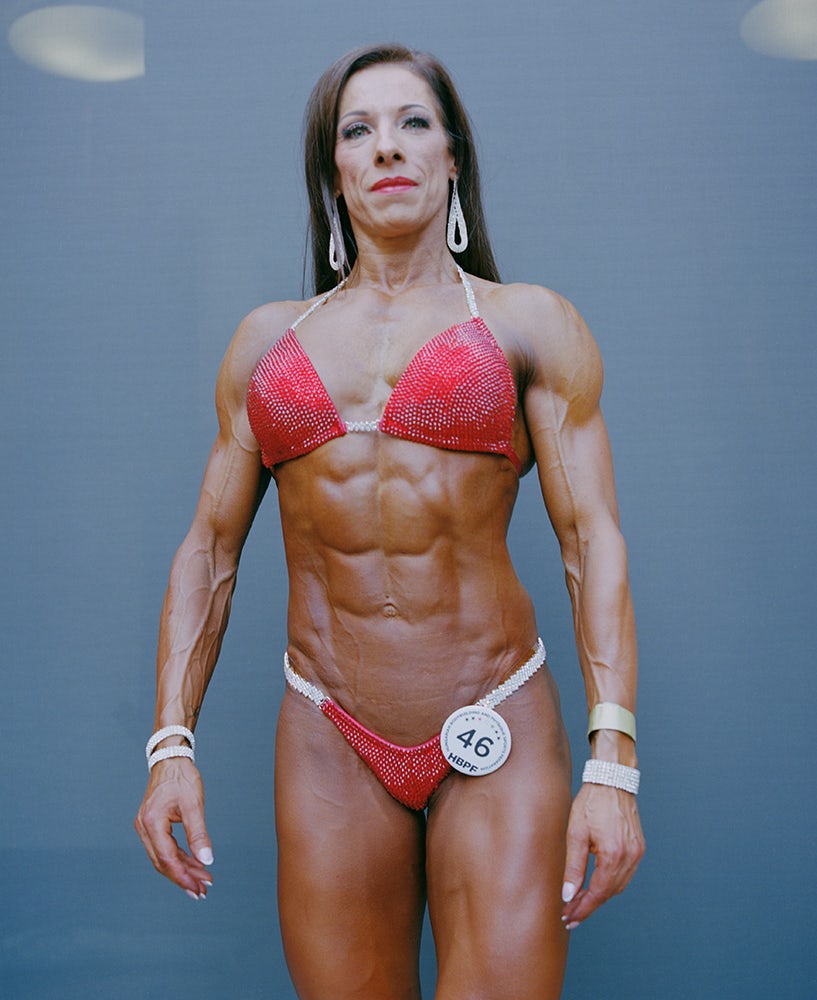
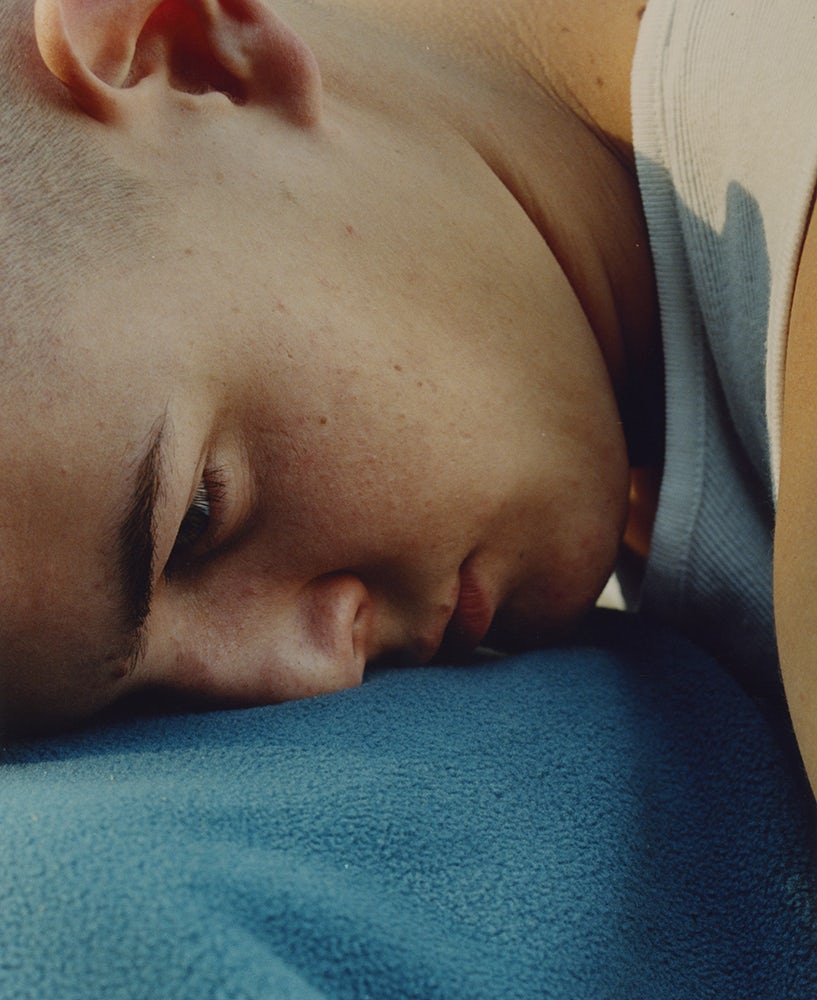
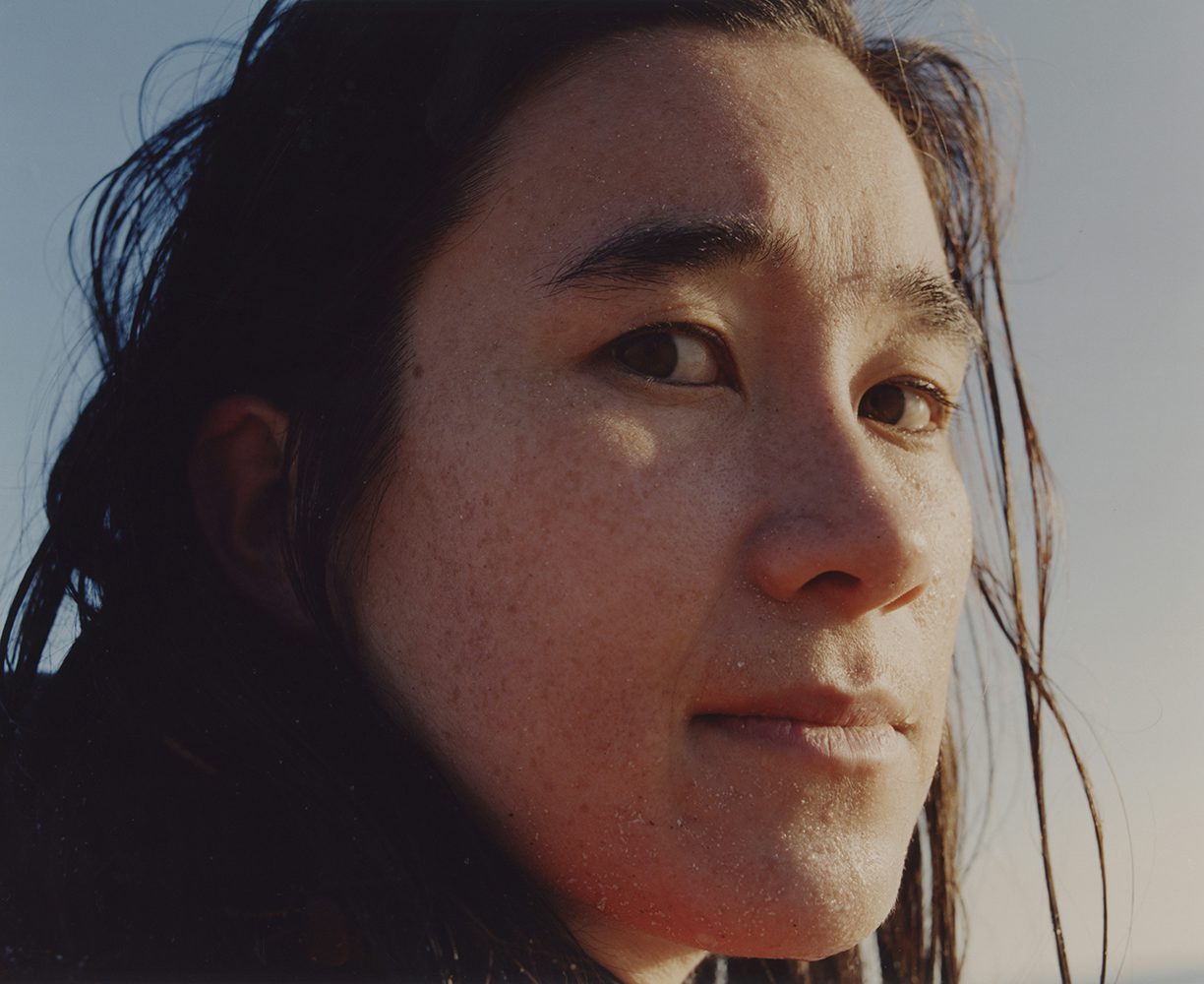
Reka, a name in Hungarian that coincidently means river, invited friends to help renovate the property when she got pregnant, and in turn, the location became a sacred space for love and connection for the group and an integral part of Ladocsi’s photography.
“I like to work with my hands and create something physical,” Ladocsi explains. “Building things helps me mentally and emotionally to stay in the right [psychic] place. We spent so much time on that island, creating and being together. I was working in New York then, so I was travelling a lot, and this project was my connection to home and being with my friends in these organic and meaningful ways.”
Themes of freedom, collectivity and connection are the conceptual force behind the project, which took on greater significance when Reka tragically passed away shortly after giving birth. “No matter how far we travel or how isolated we become, we all live in a place of connectedness. The river, lake, and island all represent the inner water in all of us. In the project, I’m discovering one’s deepest essence. I want to highlight the intensity and resilience of the human spirit, captured in the moments where we are pushing our bodies and minds to reach our highest potential.”
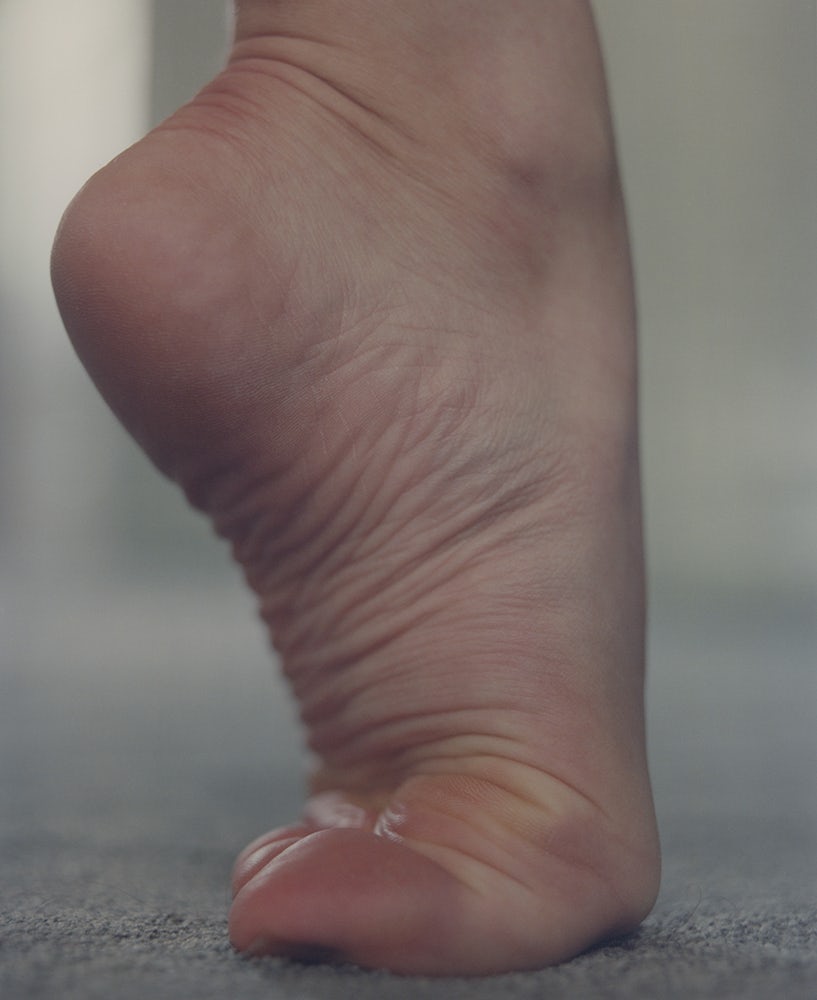
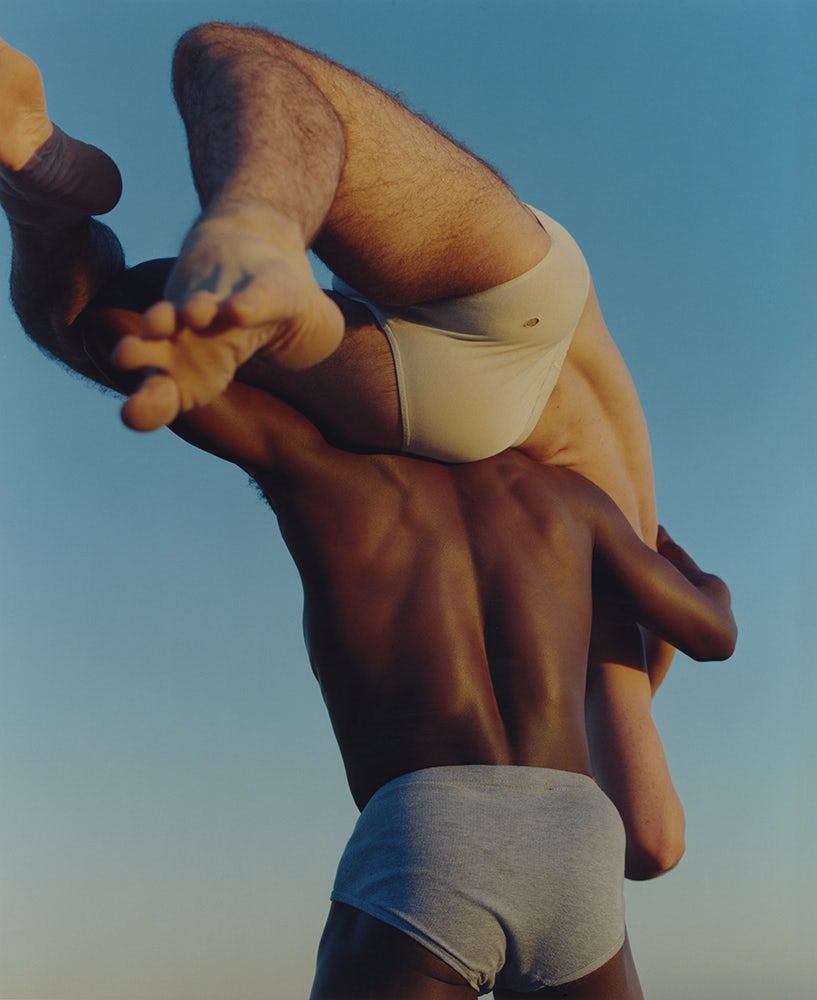

The project, which Ladocsi hopes to publish in 2024, shifts between tightly cropped intimate portraits and images of bodies physically entangled with one another in modes of play and performance. Swimming, wrestling, and martial arts are just some ways bodies connect throughout the book, creating dynamic compositions that push at the edges of the frame in vibrant and unexpected ways.
He describes this approach as “creating situations in which subjects can practice self-representation or self-expression embedded in the context of body image”. This regard for what the body is capable of is also illuminated by Ladocsi’s obsession with the materiality of bare skin, which has become a distinct marker of his visual language.
The photographer’s interest in movement also foregrounds his moving image work. Since 2017, he has collaborated with Nowness on three films: Boogie-Boogie, Dürer, and Contrast. If his photographs are a tribute to intimate relationships, Ladocsi’s films are where he comes to play and rebel.
In Dürer, seven dancers deconstruct strict and freeform movement in response to the soundtrack and the derelict swimming pool they are situated within, built on the site of a 100-year-old monastery during Hungary’s Soviet regime. The film was made in response to the Covid-19 pandemic in which the “body and mind were constrained”. Like all of Ladocsi’s work, the film possesses a pathway to individual and collective liberation as told through the emotional tempo of his dancers.
It’s been a strong year for Ladocsi, who won the Dior Photography and Visual Arts Award for Young Talents at Le Rencontres d’Arles, exhibited at the PhotoVogue Festival, and graduated with his masters in photography from the Royal College of Art in London.
With an upcoming book and new personal work in development, Ladocsi is set to have an even busier 2024, but he’s taking it all in his stride. For him, the only thing that matters is “getting close to people and creating something together”.
